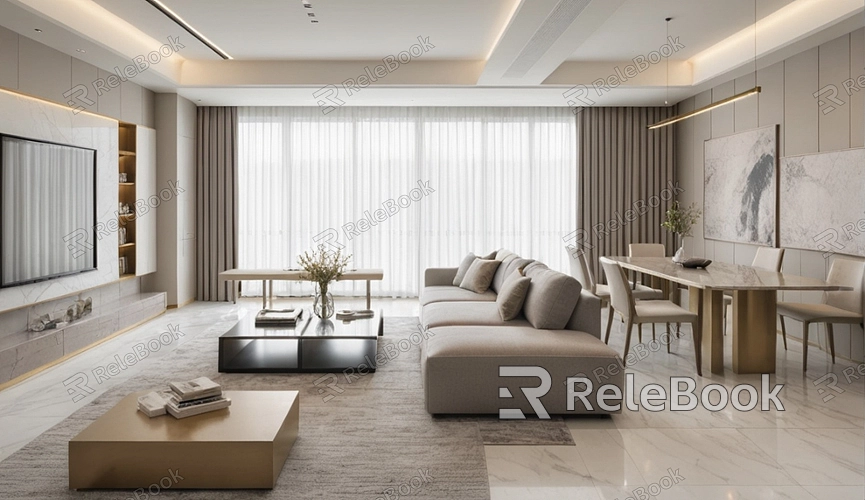How to Convert JPEG to 3D Model?
3D modeling has become increasingly important. Whether in game development, animation, or virtual reality, 3D models are essential components. Often, we may find ourselves needing to convert flat images, such as JPEG photos, into 3D models. This article will provide a detailed guide on how to convert JPEG images into 3D models, covering the necessary tools, steps, and practical tips.

Understanding the Basics of JPEG and 3D Models
Before diving in, it’s essential to clarify the basic concepts of JPEG and 3D models. JPEG is a widely used image format commonly employed for storing digital photos. It features small file sizes, making it suitable for online sharing and transmission. In contrast, a 3D model represents the virtual shape of an object through three-dimensional geometry, allowing for manipulation such as rotation and scaling in a computer environment.
Converting JPEG images into 3D models requires understanding the differences and relationships between these two formats. This process involves not only image processing techniques but also 3D modeling skills.
Preparations
Before beginning the conversion, several preparations are necessary. These include:
1. Choosing the Right Image
Selecting a clear, detailed JPEG image is crucial for successful conversion. Images with complex textures and distinct outlines will better assist in subsequent modeling.
2. Gathering Required Software
You will need some specialized software for the conversion process. Here are a few commonly used tools:
Image Editing Software: Such as Photoshop, which allows you to make necessary edits to the JPEG image.
3D Modeling Software: Programs like Blender, Maya, or ZBrush can transform the processed image into a 3D model.
Depth Map Generation Tools: Certain tools can help generate depth maps from JPEG images, further aiding the modeling process.

Image Processing
Before converting the JPEG to a 3D model, it’s necessary to process the image to extract useful information.
1. Image Editing
Use image editing software to modify the JPEG. Adjust the image's contrast, brightness, and color saturation to enhance details. If needed, you can convert the image to grayscale to better work with textures and shapes.
2. Creating a Depth Map
A depth map is a grayscale image that represents the depth information of each point in the image. Lighter areas indicate closer objects, while darker areas represent those further away. Using Photoshop or other tools, you can manually draw a depth map or use plugins to generate one automatically.
3D Modeling
After processing the image, the next step is to convert it into a 3D model.
1. Importing the Image
Open the chosen 3D modeling software and import the processed JPEG image and depth map. Ensure that the depth map corresponds correctly to the JPEG image.
2. Generating the Model from the Image
Many 3D modeling programs offer specific features to use depth maps to create 3D models. For instance, in Blender, you can use the “Displace” modifier to apply the depth map to a plane, resulting in a three-dimensional effect.
3. After generating the initial model, it often requires finetuning. Use modeling tools to correct details and optimize the model’s edges and surfaces to ensure the final appearance meets expectations.
Adding Textures
Once the 3D model is created, the next step is to apply textures. Texturing enhances the model's realism and visual appeal.
1. UV Unwrapping
Before applying textures, the model needs to be UV unwrapped. This process unfolds the three-dimensional surface into a two-dimensional plane for easier texture mapping. Using UV unwrapping tools, you can accurately apply the JPEG image’s texture to the 3D model.
2. Applying the Texture
After UV unwrapping, apply the processed JPEG image as a texture to the model. Adjust the texture's scale and orientation to ensure it displays correctly on the model's surface.
Rendering and Exporting
After completing the modeling and texture application, the final step is rendering and exporting the model.
1. Setting Render Parameters
Based on project requirements, set the rendering parameters, including lighting, shadows, and camera angles. These settings will affect the final image's quality.
2. Exporting the Model
Finally, export the 3D model in the desired format, such as OBJ, FBX, or STL, for use in other applications.
The process of converting JPEG to 3D models, while intricate, can yield satisfying results with the right tools and steps. From image processing to modeling and texture application, each stage requires careful attention. By mastering these skills, you can create unique and stunning 3D works. For more 3D models and textures, visit the Relebook website to download the resources you need and embark on your creative journey!
FAQ
Can JPEG images be converted into all types of 3D models?
Not necessarily; the complexity and detail of the JPEG image will affect the conversion's outcome. Some simple images may not yield high-quality 3D models.
What tools are essential for the conversion process?
Commonly used tools include image editing software (like Photoshop), 3D modeling software (such as Blender or Maya), and depth map generation tools.
How long does the conversion process take?
The time required for conversion varies depending on the project's complexity. Simple models might take a few hours, while more complex ones could take several days.
How can I improve the conversion results?
Selecting high-quality JPEG images and being meticulous during image processing and modeling can significantly enhance the final output.

